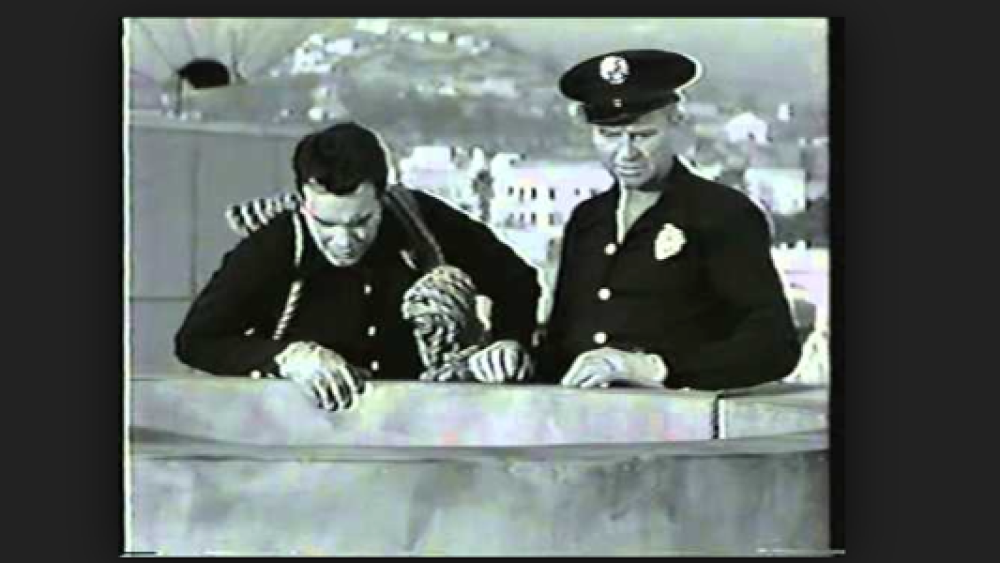Four years ago I cut the cable to my television and now rely mostly on streaming and DVDs from the local library.
Right now I’m watching “Route 66,” a show from the early ‘60s about two young men driving around the United States in a Corvette trying to put some meaning into their lives and to perhaps find a future.
I watched this show while growing up in that era. I learned a lot about what it means to be an American, its size and scope as a country, and about the people who live and work there. The takeaway for me was and is that while places look different, the people who inhabit them are similar and form strong bonds to those close to them.
Before “Route 66" aired, “Rescue 8,” had a short run plus years of syndicated reruns. I loved the “Rescue 8" stories.
The storyline has two rescue specialists with the Los Angeles County Fire Department rescuing people from dangerous and often life-threatening situations. In 1972, the same year that “Emergency!” aired, Dennis Smith’s book “Report from Engine Company 82" was published.
Nothing — be it a TV program, big-screen motion picture, or book — before or after has captured the reality of late-20th century firefighting in America like Smith’s book. In that story we get a view of riding to a fire, pulling a line, and advancing on a fire in New York’s fire-ravaged Bronx of the 1960s and 1970s.
Between fires (and there were a lot of fires) at the firehouse we get another look into the intense bond that forms between firefighters who share an experience.
What bonds us
We say with conviction that there is a bond shared between all firefighters. That may be wishful thinking.
The bonding is not all-inclusive and honest, solid bonds are only formed when there is agreement and acceptance between at least two people. Group bonding takes more work and is more difficult to achieve.
In firefighting earning trust and respect is not easy. Without the trust and respect of the firefighters with whom you work you have a difficult road ahead and no support (no one will have your back).
In the fire service give a lot of lip service to the idea of a shared bond. And while it is true that firefighters share a history centered on pride, integrity, service, courage and heroism, the same cannot be said for having a shared bond.
The act of officially becoming a firefighter pays your initial dues and establishes a connection more than a bond. Bonds are forged on mutual trust and respect, without those elements there is no bond.
Bonds are important, and confusing them with connections weakens the nature of potential human relations. Connections are essential to forming bonds, but bonds are more complex than simple connections.
Source of strife
We are connected members of the American fire service, but we’re anything but unified. Unification entails having some shared bonds. In part this comes from the fact that fire departments are organized and governed at the local level of government.
We are a country of people that prefers to be governed by people with whom we have some connection or, even better, shared bonds. With people come egos, with egos come conflict and strife.
Our resources, communities, schools and even our municipal services are prizes to be sought and manipulated for gain by ego-driven people holding themselves up as so-called leaders. We find reason to dispute and discredit nearly everything and everybody.
We’re like people trapped in house fire refusing to be rescued because we object to the way the firefighters have laddered the building.
We seek to be seen as professionals, but we cannot find an organizing principle or organization around which to place our flags. We are instead members of tribes proudly carrying our flags to display our convictions and affiliations as volunteer, union, career, urban, rural, suburban, custom, wild land, structural, suppression, prevention, offensive, aggressive, defensive, transitional, traditional, old school, progressive, east coast, west coast, and on and on.
Beer buddies
Our leaders let us down, our managers don’t care about anything but the bottom line, our heroes are flawed, and we find it difficult to trust anyone who doesn’t mirror our appearance and values.
In this environment risk-taking and safety-consciousness become occupational touchstones that drive operational behaviors. Lessons learned be damned and common sense too while we’re at it.
If fiction is truth repackaged, I’d like to hang out with the characters from “Route 66,” “Rescue 8,” “Emergency!” and “Report from Engine Company 82.” But I’d pass on having a beer with any of the mostly flawed and contrived characters who populate “Backdraft,” “Ladder 49,” “Rescue Me,” and Chicago-whatever. No offense intended if you like those movies or shows, they’re just not for me.
The human character qualities of honesty and humility are too rare today. For various reasons many see fit to repackage themselves so as to become the image that they find appealing or think others will be impressed by. Study photographs of firefighters from the past and the present to compare and see what you think.
Essence of virtue
The fire service as we know it is evolving, changing in huge leaps and by small steps, to meet new threats. Threats we know and more that we do not want to imagine will force society and thereby us as public servants to prepare for and respond to.
Fire protection, law enforcement, public works and libraries are public goods. The people who pay for those goods and services have a say in how those functions are executed and they deserve our respect. Our traditions and past practice are subordinate to the public good.
In so many ways we are our own worst enemies. Ego, pride and ignorance are in abundance overshadowing honesty and humility.
In the long distant past, colonial volunteer fire brigades organized and operated on the precept of manhood and public virtue. If those ideals even exist in today’s fire service they are too often exhibited by perverse means. It is as if we are trying to do the right things, but how we do it is less than right and sometimes downright wrong.
We may have lost forever the true essence of our virtuous and heroic past, regaining it may be a lost opportunity. It will always be one boot planted in the past and one stepping into the future, what counts though is the heart and mind connected to those boots.
8 evolving trends to watch for
1. Dwindling full-timers
“Every minute counts” is valid for emergency planning and response, but deploying a just-in-case delivery model is increasingly coming under attack for its staffing and apparatus costs. Expect more use of per diem and part-time staffing arrangements to contain employee costs.
2. Cross training
Many if not most career firefighters must have some level of emergency medical training. Expect attempts to cross-train and use paid firefighters as law enforcement officers in small- and medium-size cities.
3. Cops in charge
History has shown that fire departments more often come under control of police departments than vice versa. Expect that law enforcement officers will be increasingly asked to cross-train in firefighting and EMS in small and mid-sized cities.
4. Data driven
More decisions involving public expenditures will come down to using data to save money. Expect more radical staffing and deployment models for EMS and fire units to meet changing needs throughout cities and peak demand times throughout a given day.
5. Expanded duties
An oath to save lives and property will mean more than fighting fires. Expect to be used during disasters in all-hazard (and some not so hazardous) roles that are not your regular assignment or mission.
6. Prevention will rise
The mindset that we fight fires first and thus put prevention in a secondary stance will increasingly come under scrutiny as costly and even (more importantly) that it really violates the so-called oath to save lives and preserve property. Expect the idea of the supremacy of fire suppression over fire prevention to wane and resistance to residential fire sprinklers to decline and with it the costly fire department staffing and deployment patterns as we know it now.
7. Increased zoning
Procedures for hazardous materials incidents stand as an example of how science and fact-based decision making can drive response to emergencies and threats. Expect to see increased application of the “cold zone, warm zone, hot zone” concept to threats and emergencies (even fires).
8. Threat response
Security threats demand a unified response. Expect to see more use of the rescue task force concept combining in varying ratio police, fire and EMS personnel.













